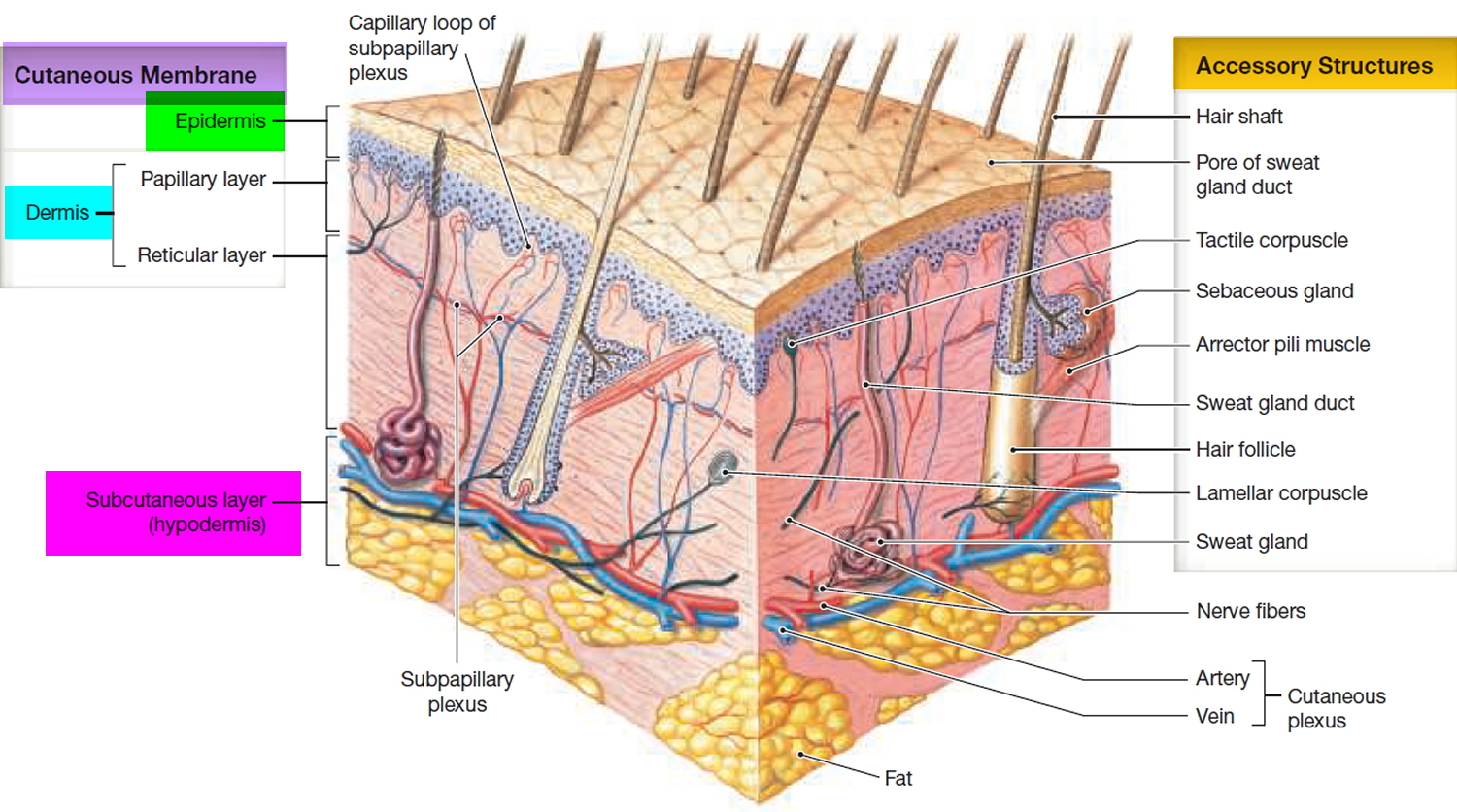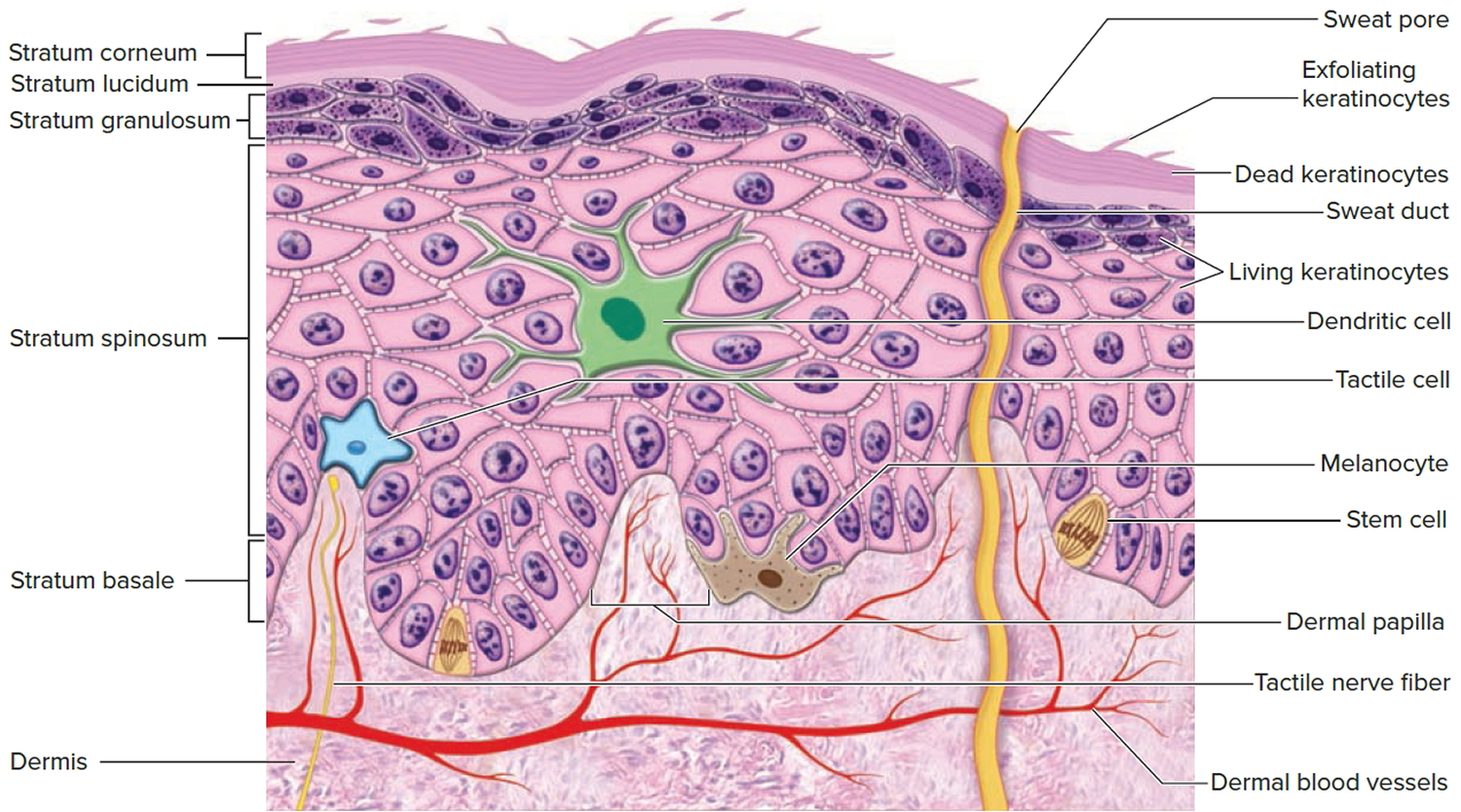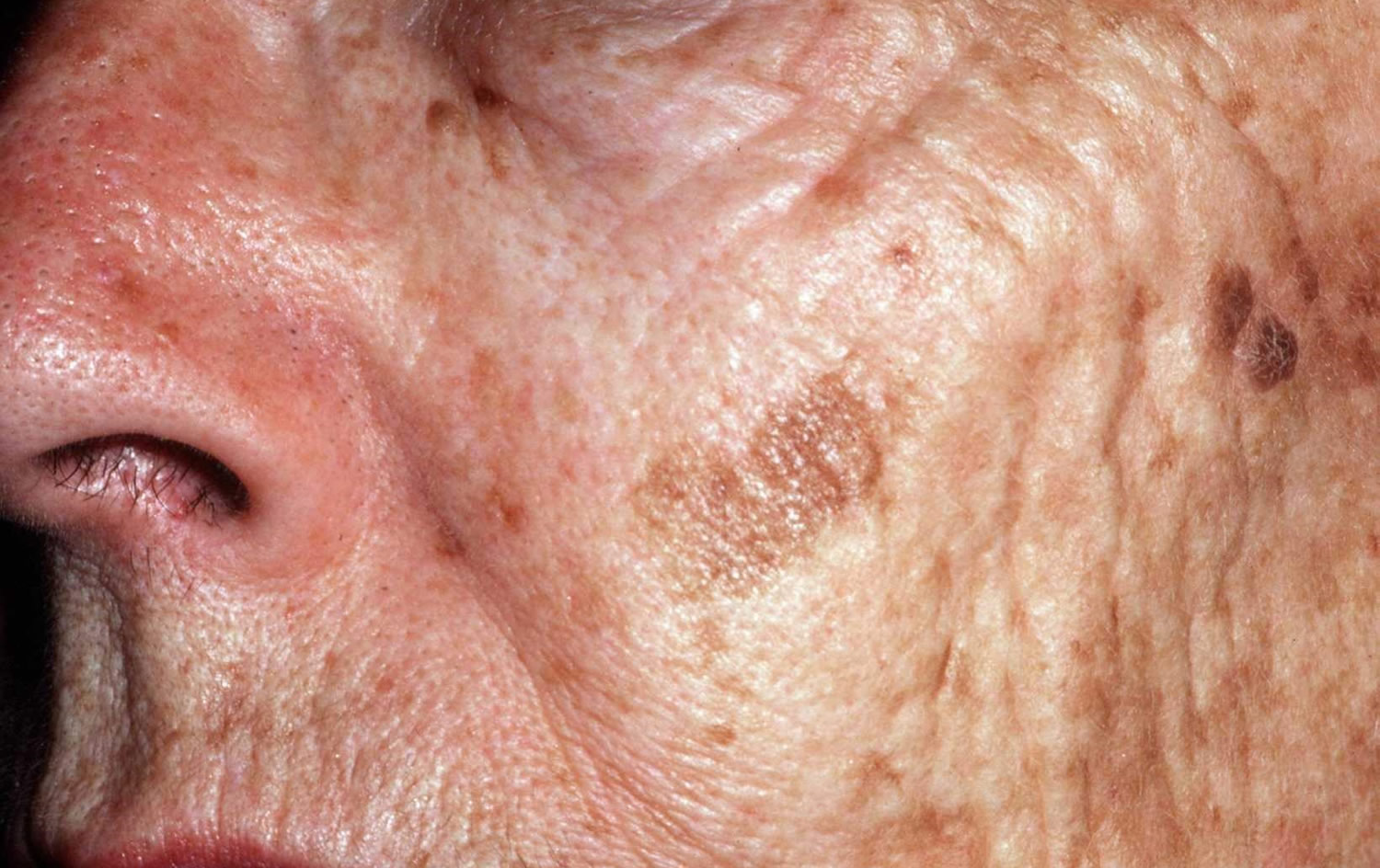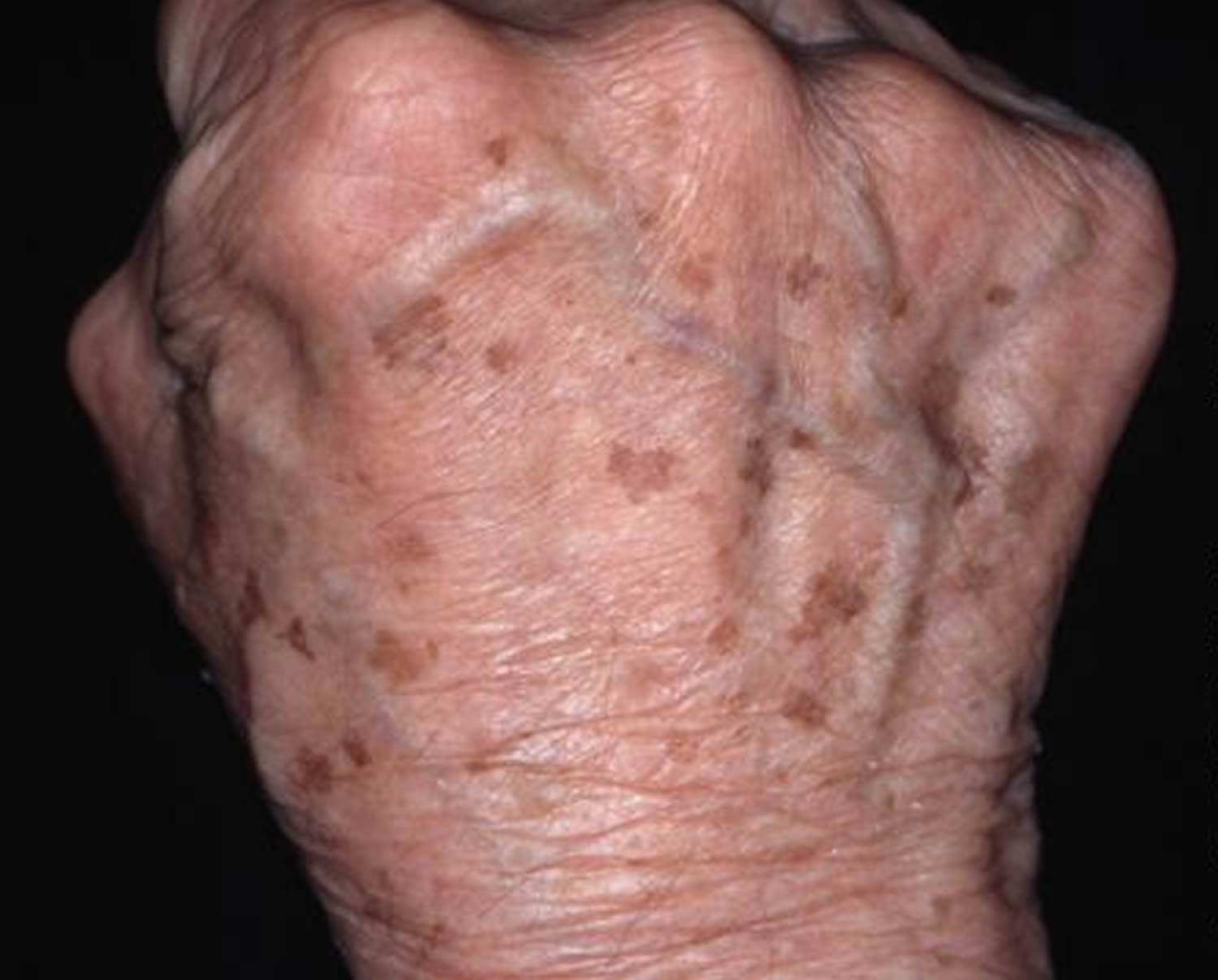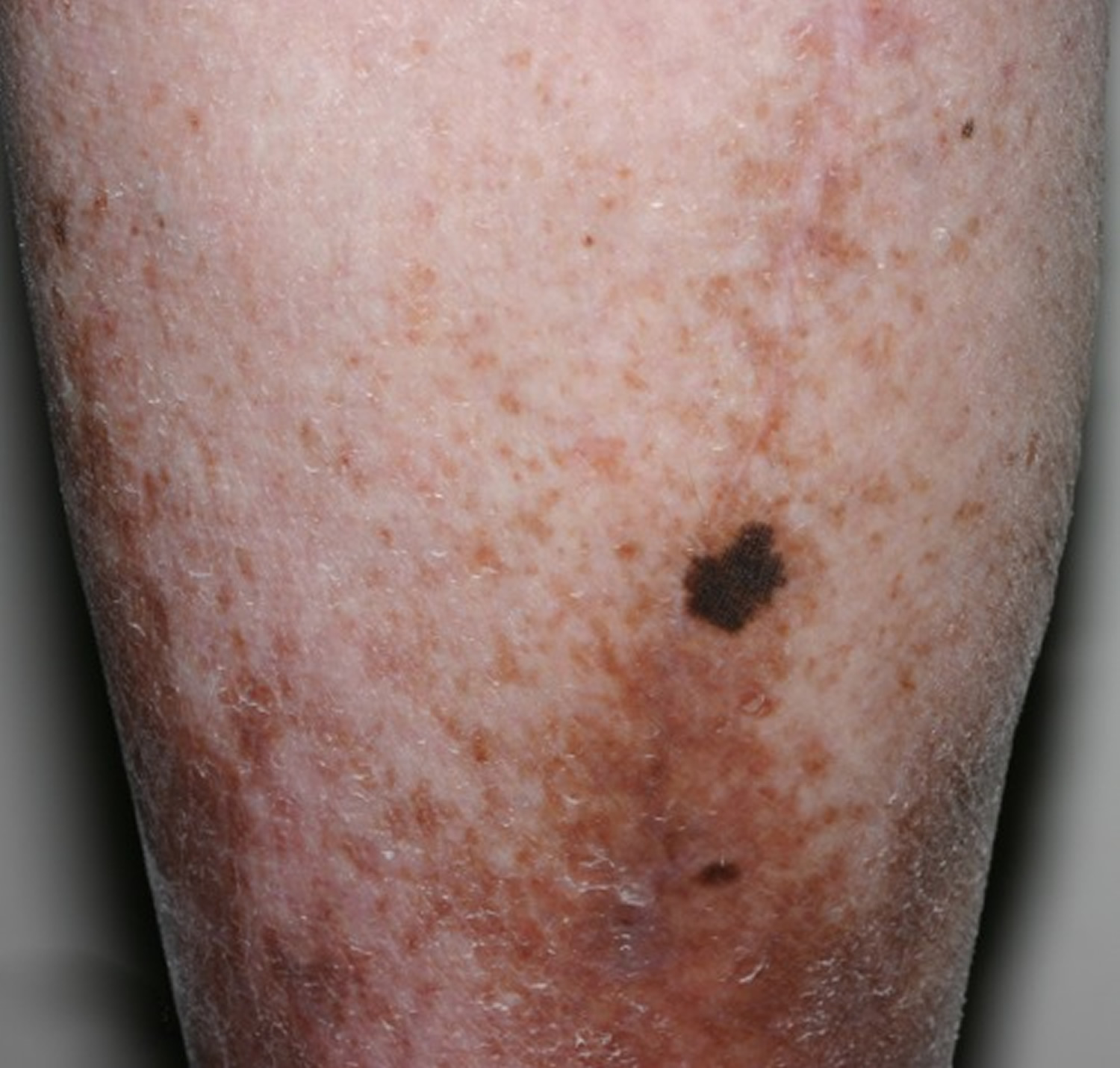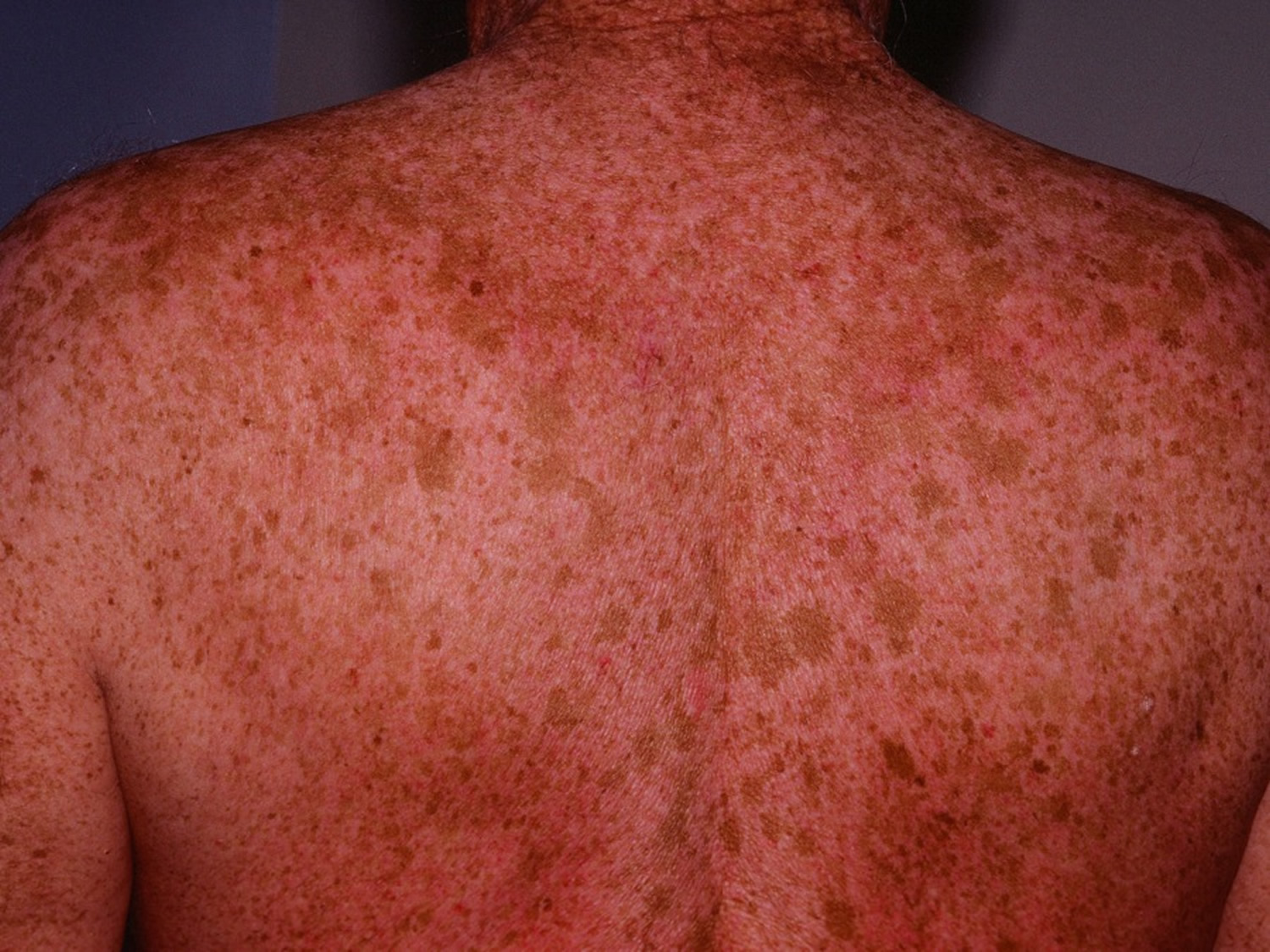Contents
What are age spots
Age spots are also called liver spots and solar lentigos — are small dark (hyperpigmented) harmless patch of skin due to increase in melanin of the skin producing a sharply-defined brown or black macule on your skin. Age spots vary in size and are found as groups of similar lesions on sun-exposed sites, particularly the face, shoulders, arms and the back of hands — areas most exposed to the sun. Age spots result from exposure to ultraviolet (UV) radiation, which causes local proliferation of melanocytes and accumulation of melanin within the skin cells (keratinocytes). Age spots (solar lentigos or lentigines) are very common, especially in people over the age of 50 years. But younger people can get them too, especially if they spend a lot of time in the sun. Sometimes they are also known as an “old age spot” or “senile freckle”.
Age spots can affect males and females of all ages and races. Solar age spots are especially prevalent in fair skinned adults. Age spots are associated with syndromes (e.g. Multiple Lentigenes Syndrome or Leopard Syndrome) are present at birth or arise during childhood.
Age spots are usually harmless and don’t require medical care. Have your doctor look at spots that are dark or have changed in appearance. These changes can be signs of melanoma, a serious form of skin cancer.
It’s best to have any new skin changes evaluated by a doctor, especially if a spot:
- Is darkly pigmented
- Is rapidly increasing in size
- Has an irregular border
- Has an unusual combination of colors
- Is accompanied by itching, redness, tenderness or bleeding
Age spots:
- Are found on chronically sun exposed sites such as hands, face, lower legs
- May also follow sunburn to shoulders
- Yellow, light or dark brown regular or irregular macule or thin plaque
- May have a dry surface
- Often has moth-eaten outline
- Can slowly enlarge to several centimeters in diameter
- May disappear, often through the process known as lichenoid keratosis
You can help prevent age spots by regularly using SPF 50+ broad-spectrum sunscreen and avoiding the sun. Clothing is more successful at preventing new age spots forming than are sunscreens. To prevent solar age spots, avoid exposure to sunlight in midday (10 AM to 4 PM), wear sun-protective clothing (tightly woven clothes and hats).
Age spots usually persist. They may increase in number with age and sun exposure. Some in sun-protected sites may fade and disappear.
Figure 1. Skin structure
Figure 2. Structure and skin cells of the Epidermis
What do age spots look like?
Age spots is often diagnosed on its clinical appearance. On occasion, it can be difficult to differentiate an irregular age spot from melanoma, a potentially dangerous form of skin cancer.
Examination using dermatoscopy can clarify the diagnosis. If there is still diagnostic doubt, a skin biopsy may be performed for histological examination.
Age spots can look like cancerous growths. But true age spots are harmless and don’t need treatment. For cosmetic reasons, age spots can be lightened with skin-bleaching products or removed.
An age spot (solar lentigo) is a flat, well-circumscribed patch. It can be round, oval or irregular in shape. Colour varies from skin-coloured, tan to dark brown or black, and size varies from a few millimeters to several centimeters in diameter. They can be slightly scaly.
They occur in light and dark skin, but tend to be more numerous in fair-skinned individuals.
Figure 5. Age spots on legs
Figure 6. Age spots on back
What causes age spots
Age spots are caused by overactive pigment cells (melanocytes). Ultraviolet (UV) light accelerates the production of melanin. On the areas of skin that have had years of frequent and prolonged sun exposure, age spots appear when melanin becomes “clumped” or is produced in high concentrations.
The use of commercial tanning lamps and tanning beds can also contribute to the development of age spots.
Common forms of age spots are due to exposure to ultraviolet radiation:
- Sun damage including sunburn
- Indoor tanning
- Phototherapy, especially photochemotherapy (PUVA)
Ionizing radiation, e.g., radiation therapy, can also cause age spots.
Several familial syndromes associated with widespread age spots originate from mutations in Ras-MAP kinase, mTOR signalling and PTEN pathways.
Risk factors for age spots
Anyone can develop age spots, but you may be more likely to develop the condition if you:
- Have red hair and light skin
- Have a history of frequent or intense sun exposure or sunburn
Age spots symptoms
Solar age spots typically appear on areas exposed to natural or artificial UV light. They appear as well-defined, light brown to black, flat spots. In people who have been treated with a form of UV light therapy called PUVA (photochemotherapy), age spots may occur in areas of the skin not exposed to UV light.
Age spots may affect people of all skin types, but they’re more common in people with light skin. Age spots:
- Are flat, oval areas of increased pigmentation
- Are usually tan, brown or black
- Occur on skin that has had the most sun exposure over the years, such as the backs of hands, tops of feet, face, shoulders and upper back
Age spots range from freckle size to about a 1/2 inch (13 millimeters) across and can group together, making them more noticeable.
Age spots prevention
To help avoid age spots and new spots after treatment, follow these tips for limiting your sun exposure:
- Avoid the sun between 10 a.m. and 4 p.m. Because the sun’s rays are most intense during this time, try to schedule outdoor activities for other times of the day.
- Use sunscreen. Fifteen to 30 minutes before going outdoors, apply a broad-spectrum sunscreen that provides protection from both UVA and UVB light. Use a broad spectrum sunscreen with a sun protection factor (SPF) of at least 30+. Apply sunscreen generously, and reapply every two hours — or more often if you’re swimming or perspiring.
- Cover up. For protection from the sun, wear tightly woven clothing that covers your arms and legs and a broad-brimmed hat, which provides more protection than does a baseball cap or golf visor.Consider wearing clothing designed to provide sun protection. Look for clothes labeled with an ultraviolet protection factor (UPF) of 40 to 50 to get the best protection.
How is the age spots diagnosis made?
Age spots are usually diagnosed clinically by their typical appearance. Concern regarding possibility of melanoma may lead to:
- Dermatoscopy. Your doctor can usually diagnose age spots by looking at your skin.
- Diagnostic excision biopsy. Your doctor may do other tests, such as a skin biopsy, to help distinguish an age spot from other conditions, such as lentigo maligna, a type of skin cancer. During a skin biopsy, your doctor takes a small sample of your skin (biopsy) for microscopic analysis. A skin biopsy is usually done in a doctor’s office, using a local anesthetic.
Histopathology of an age spot shows:
- Thickened epidermis
- An increased number of melanocytes along the basal layer of epidermis
- Unlike junctional melanocytic naevus, there are no nests of melanocytes
- Increased melanin pigment within the keratinocytes
In contrast, a freckle shows sun-induced increased melanin within the keratinocytes, without an increase in number of cells.
Age spots treatment
If left untreated, age spots will most likely persist indefinitely. Most age spots are left alone.
If you want your age spots to be less noticeable, treatments are available to lighten or remove them. Since the pigment is located at the base of the epidermis — the topmost layer of skin — any treatments meant to lighten the age spots must penetrate this layer of skin.
Attempts to lighten them may not be successful. The following approaches are used:
- SPF 50+ broad-spectrum sunscreen
- Hydroquinone bleaching cream
- Alpha hydroxy acids
- Vitamin C
- Retinoids
- Azelaic acid
- Chemical peels
Bleaching agents such as hydroquinone are not effective. Prescription bleaching creams (hydroquinone) used alone or with retinoids (tretinoin) and a mild steroid may gradually fade the spots over several months. Use of a broad-spectrum sunscreen with a sun protection factor (SPF) of at least 30 is strongly advised if you use hydroquinone and/or retinoids treatments. The treatments may result in temporary itching, redness, burning or dryness.
Preventative measures include minimizing sun exposure and use of broad-spectrum sunscreens with a sun protection factor (SPF) of at least 50+, but this needs to start early in life.
How to get rid of age spots
Because the procedures can have side effects, discuss your options carefully with a doctor who specializes in skin conditions (dermatologist). Also, make sure your dermatologist is specially trained and experienced in the technique you’re considering.
Individual lesions can be permanently removed using:
- Cryotherapy
- Intense pulsed light
- Pigment lasers
Cryotherapy and laser surgery can destroy them, but treatment may leave a temporary or permanent white or dark mark.
Freezing (cryotherapy)
This procedure involves using a cotton-tipped swab to apply liquid nitrogen or another freezing agent to the age spots to destroy the extra pigment. As the area heals, the skin appears lighter. Freezing is typically used on a single age spot or a small grouping of age spots. The treatment may temporarily irritate the skin and poses a slight risk of permanent scarring or discoloration.
Age spot removal laser
Laser and intense pulsed light therapies destroy melanin-producing cells (melanocytes) without damaging the skin’s surface. Treatments with a laser or intense pulsed light typically require two to three sessions.
After treatment, age spots fade gradually over several weeks or months. Laser therapy has few side effects, but it may result in slight discoloration of the skin. Sun protection is necessary after laser or intense pulsed light therapy.
Dermabrasion and microdermabrasion
Dermabrasion consists of sanding down (planing) the surface layer of your skin with a rapidly rotating brush. This procedure removes the skin surface, and a new layer of skin grows in its place. You may need to undergo the procedure more than once. Temporary redness and scab formation can result from this treatment.
Microdermabrasion is a less aggressive approach that leaves mild skin blemishes with a smoother appearance. You’ll need a series of procedures over months to get the full effect. If you have rosacea or tiny red veins on your face, this technique could make the condition worse.
Chemical peel
A chemical peel involves applying an acid, which burns the outer layer of your skin, to the age spots. As your skin peels, new skin forms to take its place. Several treatments may be necessary before you notice any results. Sun protection is strongly advised following this treatment. Temporary redness is likely, and there’s a slight risk of permanent changes in skin color.
Lifestyle and home remedies
NOTE: Before doing self treatment it’s important to have ANY pigmented skin lesion examined (and biopsied if indicated) by your doctor to exclude skin cancers like melanoma.
Many fade creams and lotions for lightening age spots are available in department stores, in drugstores and on the internet. These may improve the appearance of age spots, depending on how dark the spots are and how often you apply the cream. Regular use over several weeks or months may be necessary to produce noticeable results.
If you opt for an over-the-counter (nonprescription) fade cream, choose one that contains hydroquinone, glycolic acid or kojic acid. Note that some products, especially those that contain hydroquinone, may cause skin irritation.
You could also apply makeup to help make age spots less noticeable.
Skin-lightening creams
A skin lightener can fade dark spots and patches on your skin, but some come with serious health risks.
Why do some skin lighteners contain mercury?
While mercury can be harmful to your health, it also can effectively remove dark spots and lighten your skin tone. Mercury is also an inexpensive skin-lightening ingredient.
If your skin lightener contains mercury, it could be damaging your kidneys without you knowing it. Mercury can also injure your nerves, leading to permanent numbness or tingling in your hands, feet, or around your mouth.
If your children snuggle up against you, the mercury could harm their developing brains.
Your husband can also develop serious health problems if your skin-lightening product contains mercury. He could develop mercury poisoning, which can cause irritability, shyness, and tremors. Mercury poisoning can also lead to problems with eyesight, hearing, or both.
Do skin lighteners sold in the United States contain mercury?
Studies show that you can easily buy a mercury-laden skin lightener in the United States. In one study, scientists in the United States set out to buy every skin-lightening product they could find.
The scientists bought products online from countries around the world. They also scoured the shelves of U.S. stores, looking for skin lighteners. They found skin lighteners at beauty supply shops, department stores, ethnic groceries, and other retailers located within four of the largest US. metro areas — New York City, Los Angeles, Chicago, and Phoenix.
Anything that promised to lighten the skin — from creams to soaps — they bought. After their shopping spree, they had 549 different products. They tested each for mercury.
Nearly 12% of the skin lighteners contained mercury. About half of these products came from U.S. stores.
Can you tell if a skin lightener contains mercury before you use it?
Sometimes it’s possible — but not always. Here are 3 things you can do.
1.Look at the list of ingredients. According to the World Health Organization, a product contains mercury if you see one of more of these ingredients:
- Calomel
- Cinnabaris
- Hydrargyri oxydum rubrum
- Quicksilver
If you see the word “mercury” or “mercuric” on the list of ingredients that also means the product contains mercury. For example, you might see mercuric amidochloride, mercury oxide, or mercury salts.
2. Check for a warning that tells you to keep the product away from silver, gold, rubber, aluminum, and jewelry. Mercury can damage these.
3. Peek at the color if you can. A product that contains a lot of mercury is often gray or cream colored. It’s important to keep in mind, though, that a product can be gray or cream-colored without containing mercury.
Because many countries have laws that prohibit mercury in skin care products, it’s possible that you won’t find any of these clues.
How can you find a safe skin lightener?
To protect your health and get the results you seek, the American Academy of Dermatology recommends seeing a board-certified dermatologist. The advantages of seeing a dermatologist include:
- Learning what can lighten your skin. A skin lightener cannot always get rid of patches of darker skin. For example, if you have melasma that sits deep in your skin, you may need a chemical peel or laser treatment. After examining your skin and learning about what you want to do, a dermatologist can tell you what may help.
- Making sure you get a trustworthy skin-lightening product. A dermatologist can recommend a product that will lighten your skin or fade dark spots without using mercury. This will also help you avoid other harmful ingredients. Some skin lighteners that you can buy contain strong steroids. If you use this product for several weeks or months, you can damage your skin.
- Finding skin cancer. A dermatologist should check your skin for signs of skin cancer before you start using a skin lightener. Sometimes, skin cancer looks like an age spot or dark patch on your skin.
- Getting a treatment plan that can help fade dark spots and prevent them from returning. Most dark spots and patches are caused by sunlight. If you treat your skin and continue to go outdoors without sun protection, you’ll have to treat your skin all the time to fade the dark spots and patches. A dermatologist can show you how to protect your skin from the sun so that you do not develop more dark spots and patches. This can save you money. A dermatologist will also try to recommend products within your budget.

